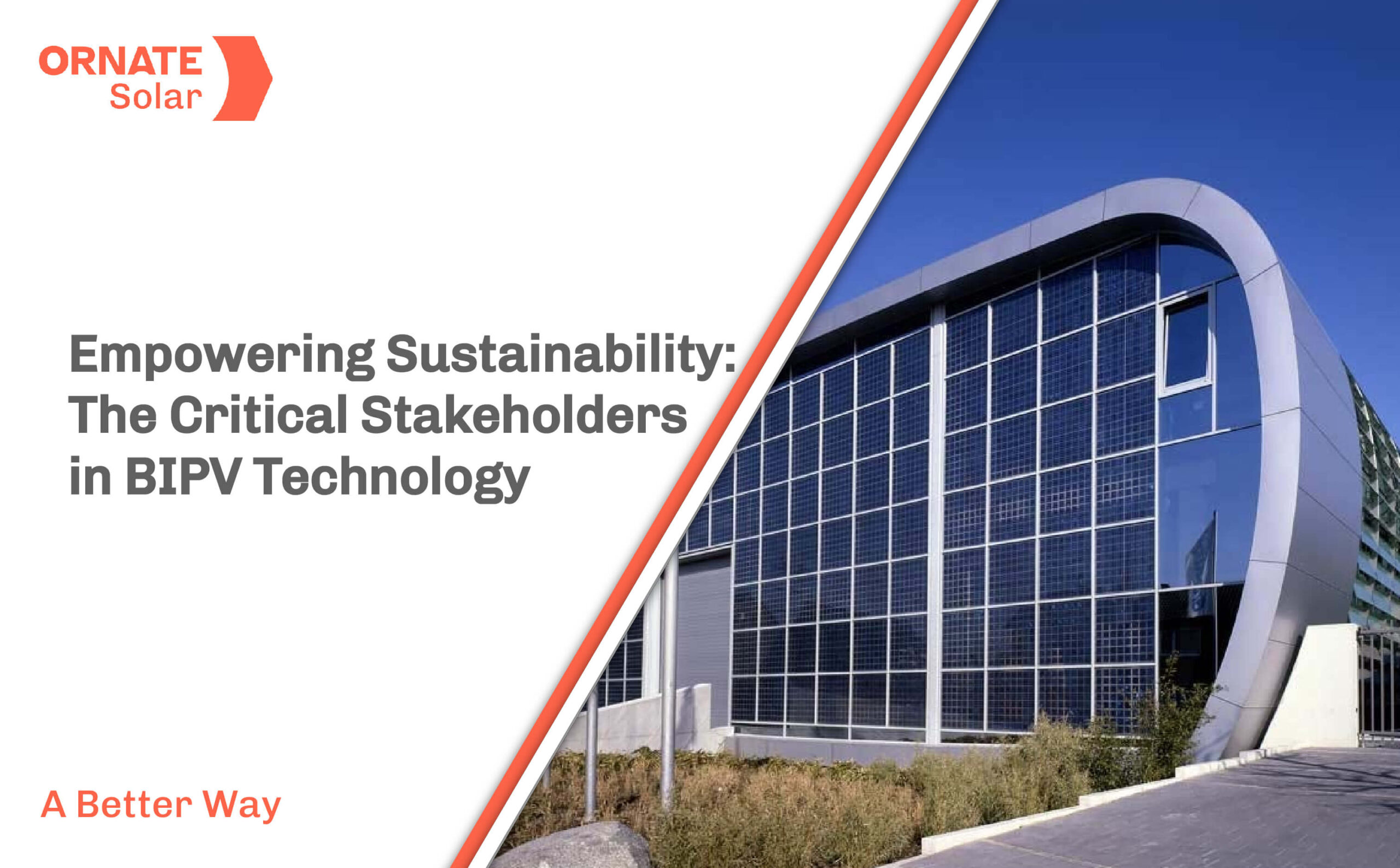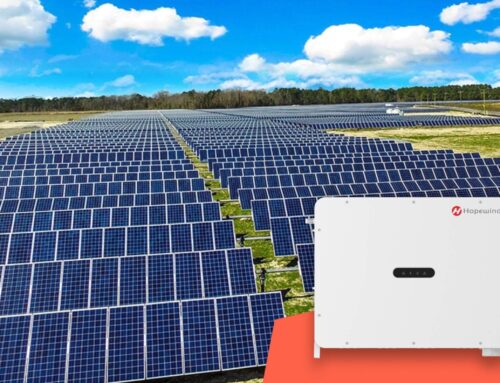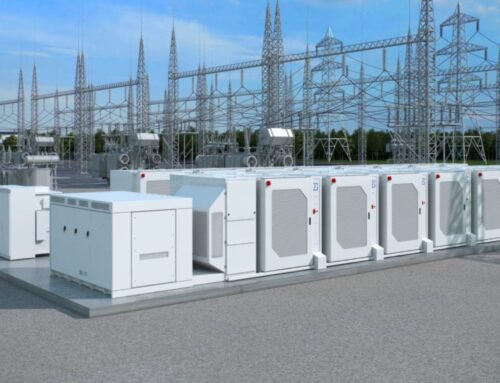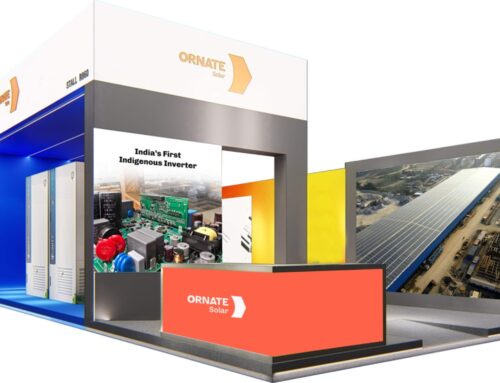

Building-integrated photovoltaics (BIPV) represent a groundbreaking fusion of renewable energy generation with architectural design. By embedding photovoltaic materials directly into building elements such as roofs and façades, BIPV systems function as both power generators and structural components. This dual functionality not only enhances the visual appeal of buildings but also contributes significantly to sustainability by reducing carbon emissions and supporting the principles of a circular economy. The successful adoption and integration of BIPV technology depend on the coordinated efforts of various stakeholders, each playing a vital role.
Key Stakeholders in BIPV
Governments
Governments are pivotal in fostering the adoption of BIPV technology through comprehensive policy-making, financial incentives, and regulatory frameworks. By crafting supportive policies, governments can accelerate the deployment of BIPV systems. Key financial incentives include:
- Investment Tax Credits (ITCs): These allow BIPV system owners to deduct a significant portion of installation costs from their taxes, reducing the financial burden and encouraging investment.
- Feed-in Tariffs and Net Metering: These mechanisms enable BIPV system owners to sell excess generated power back to the grid at guaranteed rates, making renewable energy production more attractive.
- Subsidies and Grants: Direct financial support lowers the costs of BIPV installation and operation, making the technology more accessible to a broader audience.
- Solar Renewable Energy Certificates (SRECs): These certificates create a market-driven approach to incentivize solar energy production, supporting the economic viability of BIPV projects
Regulatory frameworks ensure the safe and efficient integration of BIPV systems. Standards such as the National Electrical Code (NEC) and International Building Code (IBC) provide essential guidelines for the electrical and structural aspects of installations. Local laws, such as California’s Title 24 and New York’s Local Law 97, mandate the inclusion of solar power in certain new constructions, creating a conducive environment for BIPV growth.
Developers
Developers are at the forefront of integrating BIPV systems into new constructions, ensuring that these systems meet energy, aesthetic, and structural requirements. They are responsible for:
- Project Planning: Developers ensure that energy-conscious design techniques are employed, and that the selected equipment is tailored to the building’s use, electrical loads, and location. This involves considering building orientation, adhering to safety codes, and understanding utility issues and costs. Developers also focus on the life-cycle cost of BIPV systems, factoring in long-term savings from reduced energy costs.
- Investment Assessment: Beyond the initial financial outlay, developers evaluate the return on investment from BIPV systems. This includes the cost savings from generated power and potential local incentives. Developers source BIPV products that align with financial criteria and contribute to the building’s overall energy efficiency and aesthetic value.
- Collaboration: Successful BIPV projects require close collaboration with architects, engineers, real estate developers, and BIPV suppliers. Developers ensure that BIPV products are integrated seamlessly into building projects, treating them as part of the total-building approach to achieve high sustainability scores, such as LEED certification.
Architects

Architects play a crucial role in integrating BIPV systems into building designs, balancing environmental, structural, and aesthetic considerations. Their responsibilities include:
- Aesthetic Integration: Architects creatively incorporate BIPV solutions to enhance the visual appeal of buildings. Innovations like semi-transparent crystalline cell arrays and colored solar panels offer opportunities for visually appealing solar integration. This revolution in architectural aesthetics allows for urban sustainability without compromising design.
- Technical Design: Effective BIPV integration requires a multidisciplinary approach, considering architectural, structural, electrical, thermal, and environmental aspects. Architects must balance functionality, aesthetics, and performance while adhering to relevant codes and standards. Proper thermal management is crucial to prevent overheating and ensure the efficiency and longevity of solar panels.
- Ensuring Functionality: BIPV systems extend beyond electricity generation. Architects ensure that photovoltaic materials contribute to the building’s overall energy efficiency and sustainability goals. Residential applications include solar PV glass blocks and solar roofs with interconnecting sections or individual tiles. Advances in technology enhance the functionality of BIPV systems, integrating them seamlessly into building exteriors.
Consumers
Consumers play a significant role in driving BIPV adoption. Their preferences and decisions influence market dynamics and stakeholder strategies. Key factors include:
- Awareness and Perception: Rising awareness about environmental sustainability and the need to reduce carbon emissions drive interest in BIPV. However, misconceptions about visual impact and high costs can hinder adoption. Educating consumers about the benefits and potential of BIPV technologies is crucial.
- Financial Considerations: The high cost and long payback periods of BIPV systems remain significant barriers. Consumers seek a balance between cost and aesthetics, with government incentives playing a critical role in making BIPV more accessible.
- Market Influence: Consumers’ participation in the energy market impacts broader energy landscapes. Government policies and financial incentives encourage investments in BIPV, particularly in emerging economies where supportive policies and increasing disposable incomes drive market growth.
R&D Organizations
Research and development organizations, including academia and national labs, drive BIPV innovation through research and international collaboration. Their contributions include:
- Innovative Technologies: Advanced materials such as perovskites, organic photovoltaics (OPVs), and transparent solar cells enhance both the aesthetics and functionality of buildings. These technologies offer greater architectural flexibility and improve energy efficiency.
- Market Analysis: The BIPV market is experiencing significant growth, driven by decreasing manufacturing costs, increased product performance, and regulatory and social pressures for sustainable building practices. Government policies and public funding for BIPV research further support market expansion.
- Future Trends: The pursuit of zero-energy buildings and the integration of advanced BIPV components and smart energy systems shape the future of BIPV. Ongoing research aims to create more cost-effective, flexible, and energy-efficient BIPV materials, crucial for meeting global sustainability targets.
Conclusion
BIPV technology stands at the intersection of sustainability and architectural design, offering a forward-thinking solution to modern construction and energy conservation challenges. The collaborative efforts of governments, developers, architects, consumers, and R&D organizations are essential for the successful adoption and integration of BIPV. As BIPV technology evolves, it will play a pivotal role in achieving global sustainability goals, creating energy-efficient and aesthetically pleasing buildings for future generations. The alliance of aesthetic integration, technological innovation, and market growth underscores the significance of BIPV in redefining renewable energy use in urban environments.
About Ornate Solar
Ornate Solar is a leading solar company with 10 years of experience in the industry and the mission to reimagine the way solar is installed worldwide.
By not only partnering with the best-in-class solar brands but also developing our high-quality solutions (panels, solar inverters, accessories, InRoof), we develop and deliver solutions that are modern, reliable, and effective.
If you are looking for high-quality solar solutions, reach out to us at 1800 2026 252 to discuss your options.










Leave A Comment